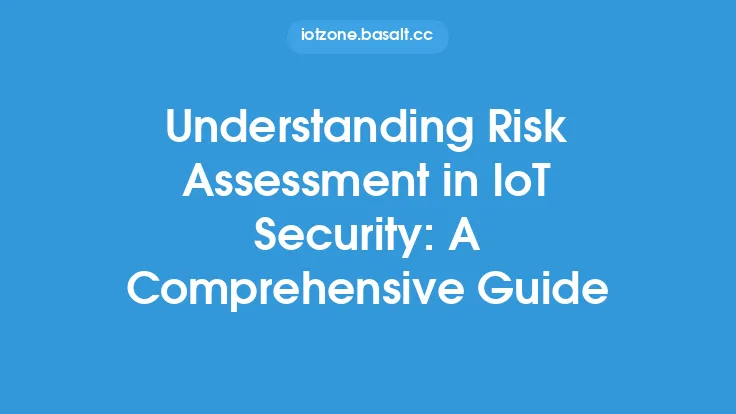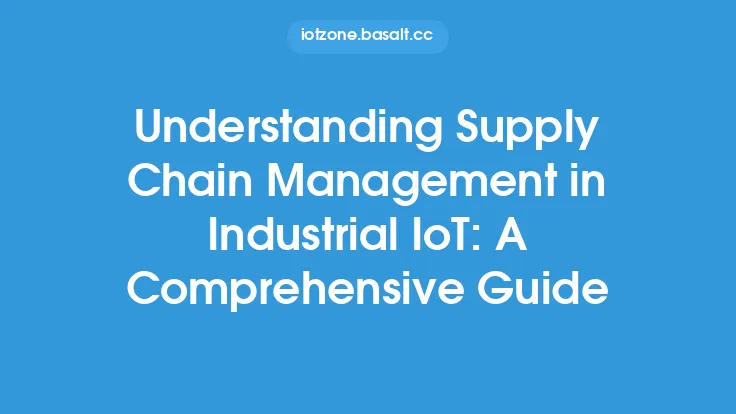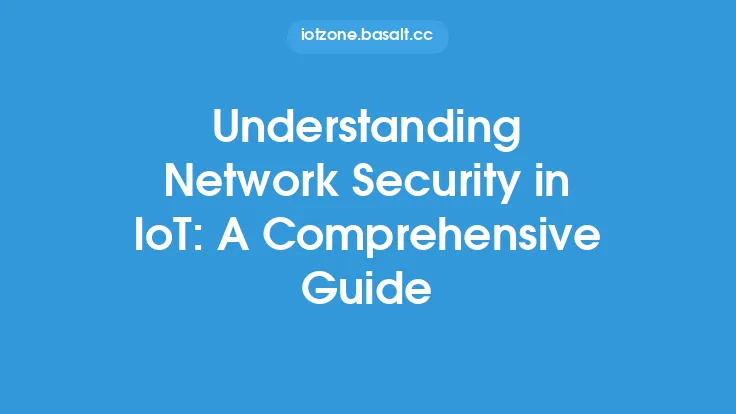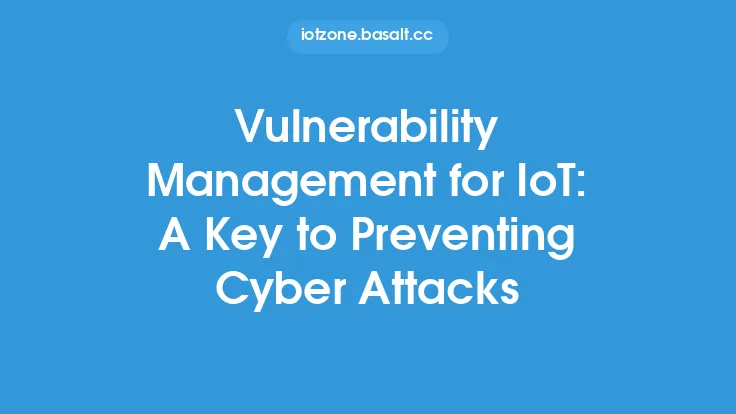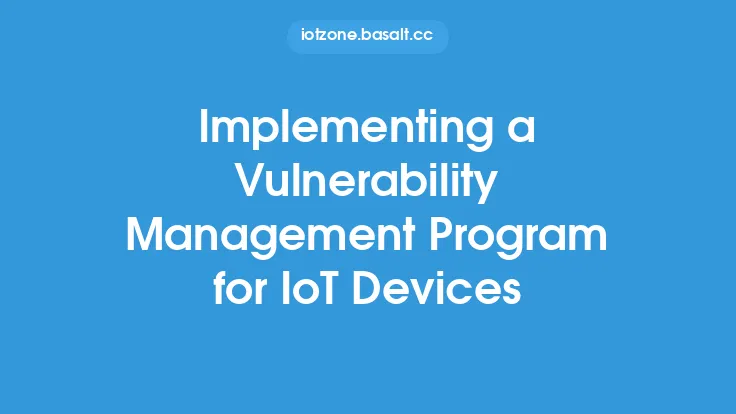The Internet of Things (IoT) has revolutionized the way we live and work, with an ever-increasing number of devices becoming connected to the internet. However, this increased connectivity has also introduced new security risks, making vulnerability management a critical aspect of IoT security. Vulnerability management is the process of identifying, classifying, prioritizing, and remediating vulnerabilities in IoT devices and systems. In this article, we will delve into the world of vulnerability management in IoT, exploring its importance, key concepts, and best practices.
Introduction to Vulnerability Management
Vulnerability management is a proactive approach to managing vulnerabilities in IoT devices and systems. It involves a series of processes and procedures designed to identify, assess, and mitigate vulnerabilities before they can be exploited by attackers. The goal of vulnerability management is to reduce the risk of a security breach by minimizing the attack surface of IoT devices and systems. This is achieved by identifying and prioritizing vulnerabilities, implementing remediation measures, and continuously monitoring for new vulnerabilities.
Key Concepts in Vulnerability Management
Several key concepts are essential to understanding vulnerability management in IoT. These include:
- Vulnerability: A vulnerability is a weakness or flaw in an IoT device or system that can be exploited by an attacker to gain unauthorized access or disrupt the device's functionality.
- Threat: A threat is a potential occurrence that could exploit a vulnerability, such as a malware attack or a denial-of-service (DoS) attack.
- Risk: Risk is the likelihood and potential impact of a threat exploiting a vulnerability. Risk is typically measured in terms of the potential damage or disruption that could occur.
- Asset: An asset is an IoT device or system that requires protection from vulnerabilities and threats.
- Control: A control is a measure implemented to mitigate or remediate a vulnerability, such as a patch, firewall rule, or access control list (ACL).
Vulnerability Management Process
The vulnerability management process involves several stages, including:
- Vulnerability identification: This stage involves identifying potential vulnerabilities in IoT devices and systems. This can be achieved through vulnerability scanning, penetration testing, and code reviews.
- Vulnerability classification: Once vulnerabilities have been identified, they must be classified based on their severity and potential impact. This helps prioritize remediation efforts.
- Vulnerability prioritization: Vulnerabilities are prioritized based on their severity, potential impact, and likelihood of exploitation. This ensures that the most critical vulnerabilities are addressed first.
- Remediation: Remediation involves implementing measures to mitigate or remediate vulnerabilities. This can include patching, configuring firewalls, or implementing access controls.
- Monitoring: Continuous monitoring is essential to detect new vulnerabilities and ensure that remediation measures are effective.
Best Practices for Vulnerability Management
Several best practices can help ensure effective vulnerability management in IoT. These include:
- Implement a vulnerability management program: Establish a formal vulnerability management program that includes policies, procedures, and guidelines for identifying, classifying, prioritizing, and remediating vulnerabilities.
- Conduct regular vulnerability scans: Regular vulnerability scans can help identify potential vulnerabilities in IoT devices and systems.
- Use threat intelligence: Threat intelligence can help identify potential threats and vulnerabilities, enabling proactive measures to mitigate risks.
- Implement a patch management program: A patch management program can help ensure that IoT devices and systems are up-to-date with the latest security patches.
- Use secure communication protocols: Secure communication protocols, such as Transport Layer Security (TLS), can help protect data in transit and prevent eavesdropping and tampering.
Technical Considerations
Several technical considerations are essential to effective vulnerability management in IoT. These include:
- Device hardening: Device hardening involves configuring IoT devices to minimize their attack surface. This can include disabling unnecessary services, implementing secure passwords, and configuring firewalls.
- Secure coding practices: Secure coding practices, such as input validation and error handling, can help prevent vulnerabilities in IoT device firmware and software.
- Firmware and software updates: Regular firmware and software updates can help ensure that IoT devices and systems are up-to-date with the latest security patches.
- Network segmentation: Network segmentation can help isolate IoT devices and systems, preventing lateral movement in the event of a security breach.
- Encryption: Encryption can help protect data in transit and at rest, preventing eavesdropping and tampering.
Conclusion
Vulnerability management is a critical aspect of IoT security, requiring a proactive approach to identifying, classifying, prioritizing, and remediating vulnerabilities in IoT devices and systems. By understanding key concepts, following best practices, and considering technical aspects, organizations can reduce the risk of a security breach and protect their IoT devices and systems from potential threats. Effective vulnerability management is essential to ensuring the security and integrity of IoT devices and systems, and it requires ongoing effort and attention to stay ahead of emerging threats and vulnerabilities.

